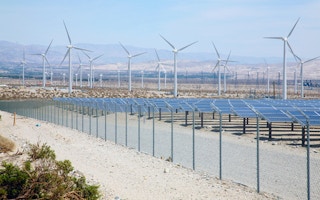The International Energy Agency (IEA) has confirmed that countries can effectively integrate high shares of wind and solar energy in their national power systems, at little extra cost in the long term.
The new IEA report, The Power of Transformation - Wind, Sun and the Economics of Flexible Power Systems, states that switching 30 per cent of a country’s annual electricity production to wind or solar comes with only a small additional long-term cost. However, the exact figure is conditional on the degree of flexibility in the system and the strategy which is deployed.
Maria van der Hoeven, Executive Director, IEA, explains: “In the classical approach, variable renewables are added to an existing system without considering all available options for adapting it as a whole. This approach misses the point. Integration is not simply about adding wind and solar on top of ‘business as usual’. We need to transform the system as a whole to do this cost-effectively.”
Examples of countries which have successfully integrated high shares of renewable energy are Italy, Germany, Ireland, Spain and Portugal, where wind and solar accounted for over 10 per cent of electricity generation in 2012.
Denmark has even surpassed this, as new data from the Danish Energy Agency highlights that renewables amounted to 25.8 per cent of the country’s energy consumption last year.
“
For any country, the integration of the first 5-10 per cent of variable renewable energy (VRE) generation will be free from either technical or economic challenges provided three conditions are met: uncontrolled local “hot spots” of VRE deployment must be avoided; VRE must contribute to stabilising the grid when needed; VRE forecasts must be used effectively
However, internationally there is considerable room for improvement given that wind and solar PV account for just about 3 per cent of world electricity generation.
Renewable integration achievable
The IEA study states that for any country, the integration of the first 5-10 per cent of variable renewable energy (VRE) generation will be free from either technical or economic challenges provided three conditions are met: uncontrolled local “hot spots” of VRE deployment must be avoided; VRE must contribute to stabilising the grid when needed; VRE forecasts must be used effectively.
States that are committed to generating a higher renewables share will also need to transform their power system. To do this, the IEA recommends that renewables be employed in a “system-friendly way using state-of-the art technology”, and notes that the day-to-day operation of power systems and markets need to be improved.
Emerging leaders
The feasibility of a complete power transformation is contingent on whether a power system is ‘stable’, meaning that “no significant investments are needed to meet demand in the short term”, or ‘dynamic’, which means a system needs “significant investments short-term, to meet growing power demand or replace old assets.”
The IEA classifies nations such as India, China and Brazil as ‘dynamic’ players, which have the power to introduce flexible systems with large shares of renewable energy from the offset.
Director Maria van der Hoeven, observed: “Emerging economies really have an opportunity here. They can leap-frog to a 21st-century power system – and they should reap the benefits.”
Although there was a slump in global renewable energy investment in 2013, new opportunities have opened up in many sectors and unexpected countries are beginning to take the lead, according to EY’s latest Renewable energy country attractiveness index, which was also published this week. South Korea, India and China all appeared in the top 10 of EY’s index, with many emerging economies fast climbing the index.

















